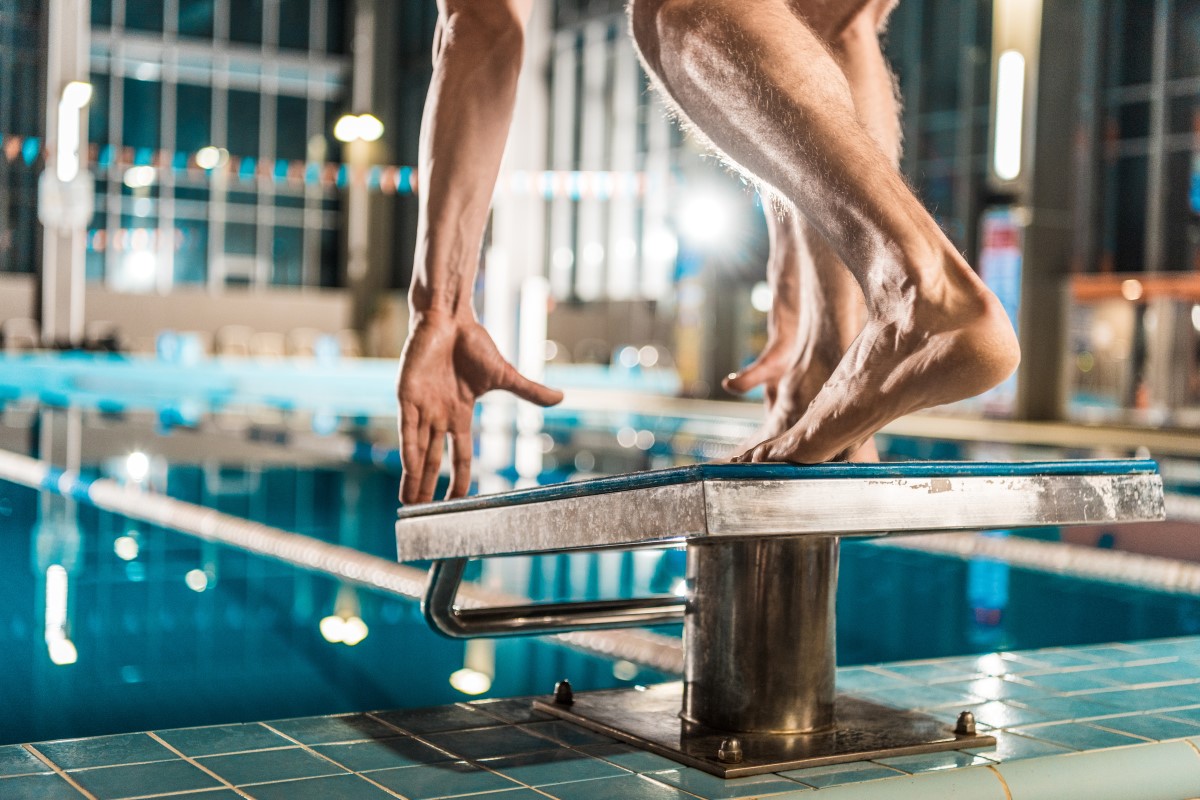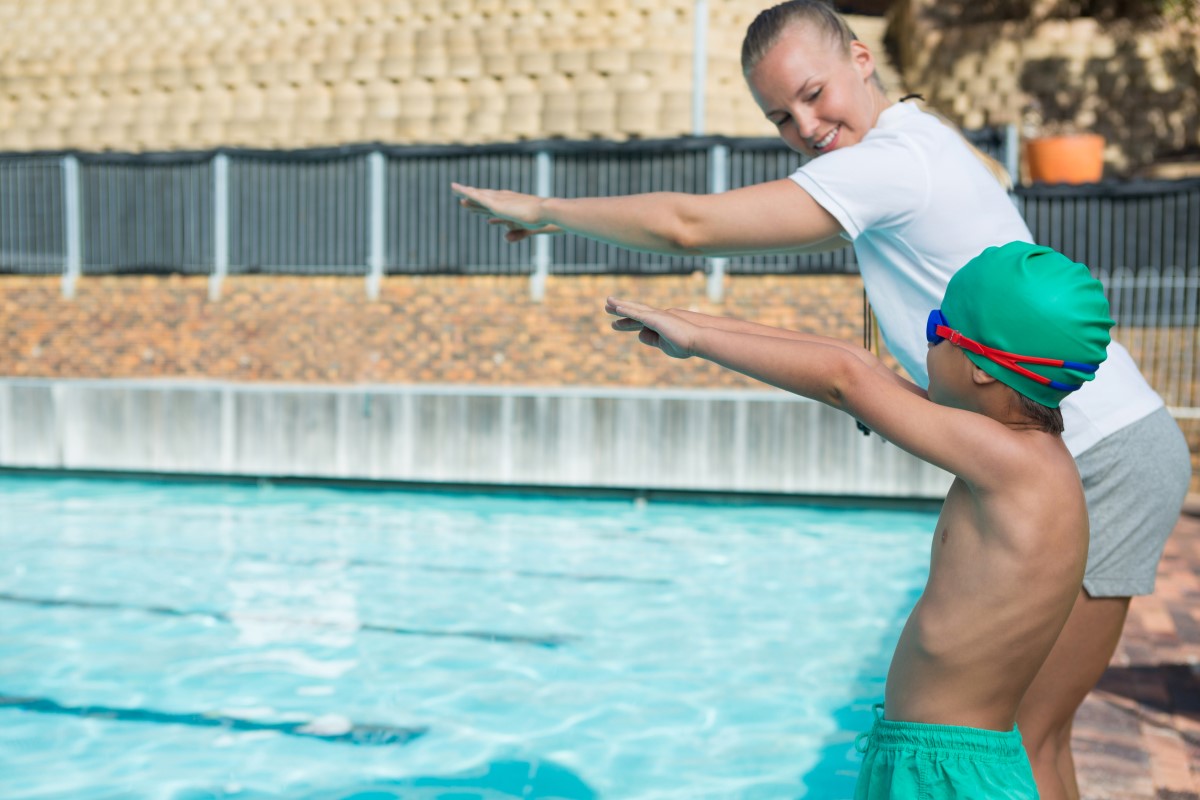
Here are AquaMobile Swim School’s steps for learning how to dive safely.
Before practicing diving, ensure the water is deep enough and other swimmers are far enough away.
1) Start with a sitting dive!
A sitting dive is a great way to get comfortable entering the water headfirst. You also enter the water from a close distance.
- Sit at the pool’s edge with your feet in the water against the wall.
- Put your arms straight up and keep your hands together. Your elbows should be touching your era.
- Bend your upper body forward and downwards keeping your arms close to the water.
- Learn forward with your fingers stretched and push off the wall of the pool with your feet. Make sure your fingers enter before the rest of your upper body.
Try this step out a few times. This will ensure your entry is smooth.
2) Now try a kneeling dive!
After mastering the sitting dive, you can transition to a kneeling dive. It’s a little more complex, but it is the next step to becoming a better diver.
- Position yourself as close to the edge of the pool as possible.
- Crouch on one knee, Place the toes of your lead foot at the pool’s edge.
- Keep your arms straight in front of you and your head down. Don’t forget to stretch out your hands.
- Slowly lean forward and push your feet against the pool’s edge. Enter the pool fingers first.
Repeat this type of dive until you are ready to move on to diving standing up.
3) Stand and learn how to dive from your feet!
Now that you can successfully kneel dive, you can add some height by rising to your feet.
- Stand with your feet together and curl your toes over the edge of the pool.
- Raise your arms above your head. Your arms should be touching your ears.
- Slightly bend your knees. Stay relaxed to avoid slapping the water.
- Tuck your chin, bend at the waist and push off with your feet entering the water fingers first.
- Try this method off a diving board for an extra challenge.
Once you gain enough confidence, think about diving from a starting block. Make sure to find someone to teach you this method before trying it out.
4) Try a dive from the starting block!
Once you can successfully dive standing up, move onto the starting block. Ensure the diving area is deep and spacious before diving from any height.
- Place one foot with your toes just over the edge of the block. The other should be next to it a step behind.
- Crouch and hold the edge of the starting block with both hands.
- Make sure your head is tucked with your chin down before diving.
- Push off the blocking using both hands and your feet. Stretch your arms over your head as you jump.
- Ensure your arms are straight and your body is extended into a streamlined position.
- Straighten your out as soon as you hit the water. This makes sure you don’t go too deep.
Diving this way is quite challenging. We recommend working with a swim instructor to get it right. This way, you know the proper technique to dive safely.
5) Practice, practice, practice!
Practice makes perfect! If your limbs slap the water or you belly flop, remember this. Like with any skill, diving allows you to learn from your mistakes and improve over time!
6) Follow these tips!
There are a few things to remember regardless of what type of dive you’re trying out. Follow these tips to ensure your next time diving is safe and fun!
- Streamline your position to minimize resistance.
- Your arms should touch your ears during any type of dive.
- Move onto more complex techniques only once you are comfortable with what you know.
Diving can take time to get good at. However, patience is key to getting better at this skill that can be done in a variety of different ways. Learning how to swim is an important part of becoming an amazing diver. Consider taking some lessons before learning how to dive!



